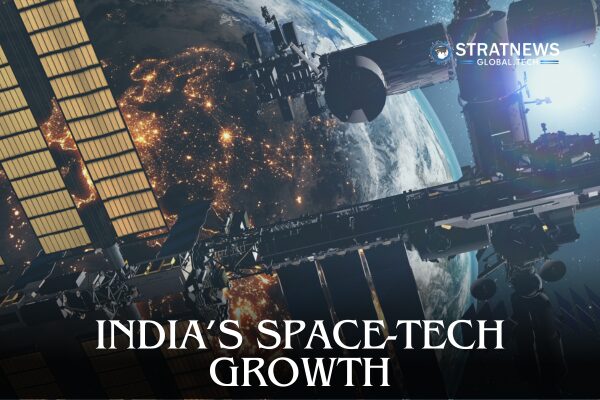Turning Satellite Intelligence into Real-World Impact
India’s private space-tech sector is undergoing a remarkable transformation, with private players driving innovation at an unprecedented pace—particularly in the downstream segment that deals with Earth Observation (EO), analytics, and real-time applications. With the sector projected to reach a staggering USD 610 billion by 2031, the space economy is rapidly becoming a magnet for entrepreneurs, investors, and technologists.
At the centre of this momentum is a wave of government reforms—spearheaded by initiatives such as IN-SPACe and the National Geospatial Policy—that are opening new frontiers for private enterprises.
In an exclusive conversation with StratNewsGlobal, Krishanu Acharya, Co-Founder and CEO of Suhora Technologies, a rising geospatial intelligence firm, discussed how policy shifts are enabling startups like his to shape the future of India’s space-based intelligence landscape.
“We believe the downstream segment will be the primary driver of demand in the new space economy,” said Acharya. “And government policy has been instrumental in creating that opportunity.”
From Policy to Platform
At the heart of the transformation lies India’s effort to democratize access to space-based data. The Indian National Space Promotion and Authorization Center (IN-SPACe) and the recently unveiled National Geospatial Mission enable private players to move beyond launch vehicles and satellites—into areas where data becomes actionable intelligence.
“IN-SPACe’s PPP initiatives and the push for commercially accessible datasets through platforms like PM Gati Shakti are game-changers,” Acharya emphasized. “It allows companies like ours to contribute meaningfully to sectors as critical as infrastructure, security, and disaster resilience.”
Suhora Technologies is leveraging this momentum through a suite of proprietary platforms that convert satellite imagery into high-impact, real-world solutions.
Real-Time Intelligence for a Real-World Edge
Suhora’s flagship EO platform, SPADE, optimizes satellite tasking and acquisition for dynamic monitoring. The utility of such capabilities became starkly evident during the South Lhonak Glacial Lake outburst in 2023.
“We were able to map the affected areas and assess damages in near real-time,” said Acharya. “That’s the power of taskable, analytics-ready satellite data.”
Other platforms in the company’s portfolio cater to strategic domains. MIRKA, for instance, supports ISR (Intelligence, Surveillance, Reconnaissance) operations by delivering persistent monitoring and threat alerts. SID, Suhora’s disaster analytics engine, enables real-time predictive risk assessments—serving agencies and insurers alike.
“Whether it’s unauthorized maritime activity, a natural disaster, or unplanned urban expansion—our systems bring clarity where uncertainty dominates,” he noted.
A Sector No Longer in Orbit, But on the Ground
Acharya argues that EO data is no longer the preserve of elite scientific institutions or defence agencies—it’s now a foundational tool for critical sectors.
“Satellite surveillance, border monitoring, climate resilience—these are not luxuries anymore. They are essential for a country as vast and dynamic as India.”
In agriculture, Suhora’s analytics support precision farming, drought assessment, and yield forecasting—vital in a country where over half the population is engaged in farming. In urban planning, their geospatial models enable smart city development by tracking land use patterns and infrastructure growth.
“These capabilities aren’t futuristic anymore,” Acharya said. “They’re needed today.”
India’s Private Space-Tech: A Regional Vision, A Global Mission
Looking ahead, Suhora is banking on AI-driven ISR and multi-sensor fusion—combining radar, hyperspectral, RF, and thermal data to offer a holistic, real-time picture of Earth systems and human activity.
“The future lies in integrating data sources, sensors, and analytical layers,” Acharya remarked. “We want to create systems that don’t just observe but understand.”
The company also expands beyond Indian borders, targeting the rapidly growing demand for geospatial intelligence across the Asia-Pacific region.
“Our vision goes beyond technology,” Acharya concluded. “It’s about using space intelligence as a force for smarter governance, climate resilience, and national security—not just for India, but for the region.”


